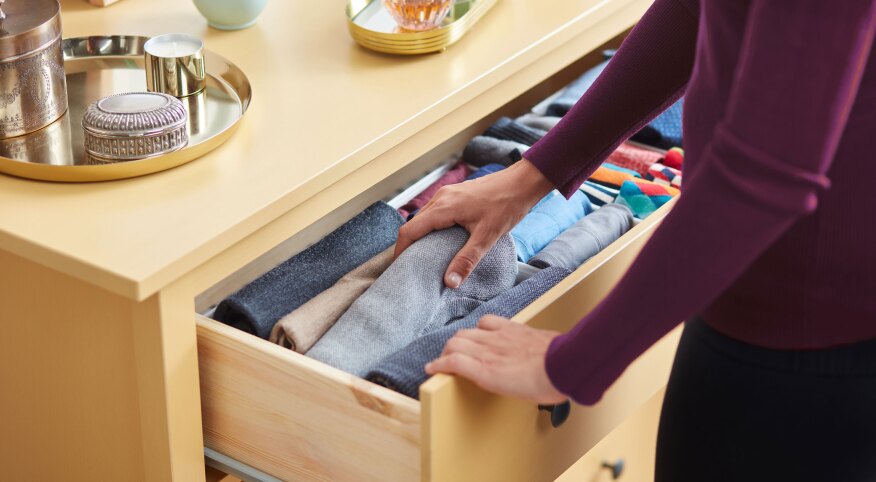During the past year, friends and family asked me what I thought about Tidying Up with Marie Kondo. The several episodes I watched when it premiered on Netflix triggered flashbacks to my former career as a professional organizer, where I occupied a front-row seat to the world of clutter and chaos.
As I saw the KonMari master glide into a couple’s home with a quiet, yet cheerleader-type energy — she “loves mess” — I recognized the look of hope on her clients’ faces. What I didn’t see was the petite mess-master trudging through slippery paths paved with yellowed newspapers and years-old magazines. Or climbing over crumpled clothing and plastic storage boxes doubling as bedroom furniture. Instead, she surveyed bedrooms, kitchens and garages engorged with long-ago purchased and forgotten possessions. Her enthusiasm never waned.
With no need for judgment, eye-rolling or rubber boots, she calmly shared her sage organizing advice while the couples listened. They were eager for her to transform their home and bring order to their lives. She showed them how to convert their tightly packed closets into mountains of clothing piled on their beds, and eventually into bags to be donated. She directed them to dump the contents of kitchen drawers and cabinets, limit the items they kept to those that “sparked joy,” and thank each item for its service. Then the camera cut to her waving goodbye and climbing into an SUV, driving off to where I can only guess was The Container Store. Either she offered a level of self-service organizing I never imagined possible, or the producers of the show understood that watching people sort through clothes and kitchen utensils is as exciting as watching a toddler learn how to tie his shoes wearing mittens.
If I had imparted my organizing wisdom to my clients and then driven off in my crumb-filled minivan, my clients would have refused to pay me with the checks they couldn’t find. Maybe I was a helicopter organizer, but my clients and I worked side by side, and not only because space was limited.
Together we sorted through pantries stocked with food older than my then-toddler sons, emptied medicine cabinets that rivaled a pharmacy and dug through dresser drawers that held more adult toys than socks. Like an archaeologist, I didn’t know what I would uncover and how long it had been there.
My clients’ eyes lit up when they discovered hardwood floors buried beneath papers and clothing, especially when they were certain the room was carpeted. They expected me to challenge their warrior-like protection of random items that they believed would be useful or valuable one day (read: Beanie Babies). Instead, I encouraged them to keep anything that meant something to them.
During one of the Tidying Up episodes, the camera cut to the driveway. Piled against the garage doors were dozens of bulging trash bags. What they didn’t show, yet I witnessed with my clients, was one partner rifling through the bags like an FBI agent making sure the other hadn’t slipped a too-tight, ripped college T-shirt or a hideous ugly sweater into the bag.
“Tosser’s Remorse” is real — and a term I just made up. I convinced my clients to let me take their donation bags with me. If I didn’t, I knew that minutes after I left, they would undo the progress we had made during our session. The quicker my client list grew, the faster my party invitations dwindled. “I was going to invite you to my house,” a friend would say, “but it’s too disorganized”; or, “We just moved – well, two years ago – and haven’t put everything away.”
Obviously, these friends didn’t know me well. Instead of assessing their closets and pantries, I would have been scouring the buffet table for anything dipped in chocolate.
There are no privacy laws similar to HIPAA in organizing or organizer-client privilege, yet clients trusted that I wouldn’t share details of our sessions with others. A few even considered me their tidy little organizing secret. These stealth individuals concocted ways to cover their tracks and hide my participation in their home transformation by turning me into their coconspirator. They introduced me to nosy family and friends as their “decorator,” their “feng-shui consultant” or their “Spanish tutor.” Mucho gusto became my go-to phrase.
One woman didn’t want her spouse to know she was a closet hoarder. When she downsized, she had to reduce her stash of late-night purchases. A few days after we packed up her closets, she started a small resale business with her new inventory of QVC merchandise, still in the original packaging. I’ll always remember her parting advice: “Friends don’t let friends shop while on Ambien.”
Not everyone who called me needed my help. A business consultant hired me to make his home office more functional. “I desperately need your help,” he told me. When I arrived, I expected to see a large desk with folders and loose papers cascading over the sides like a waterfall. Instead, the desktop was as clear as a frozen pond. After the guy’s phone rang and he opened the bottom desk drawer to take the call, I realized we viewed organizing differently.
Like a physician struggling to find a cure for a patient, I assured him there was nothing I could do for him except offer him a job as my assistant if being a lawyer didn’t pan out.
I’d like to believe that more than a dozen years after I quit my organizing business, my former clients are living free of clutter and stress. Yet if the piles are back or they can no longer close a packed closet, I hope they implement the various strategies I taught them. Or maybe they’ll decide that the clutter sparks at least as much joy as I feel when I attend my friends’ parties.
Lisa Kanarek is a freelance writer based in Dallas.

Stocksy









